March 2025
The global wireless electric vehicle charging market is expected to grow from USD 457.14 million in 2025 to USD 3,433.07 million by 2034, with a CAGR of 37.06% throughout the forecast period from 2025 to 2034.
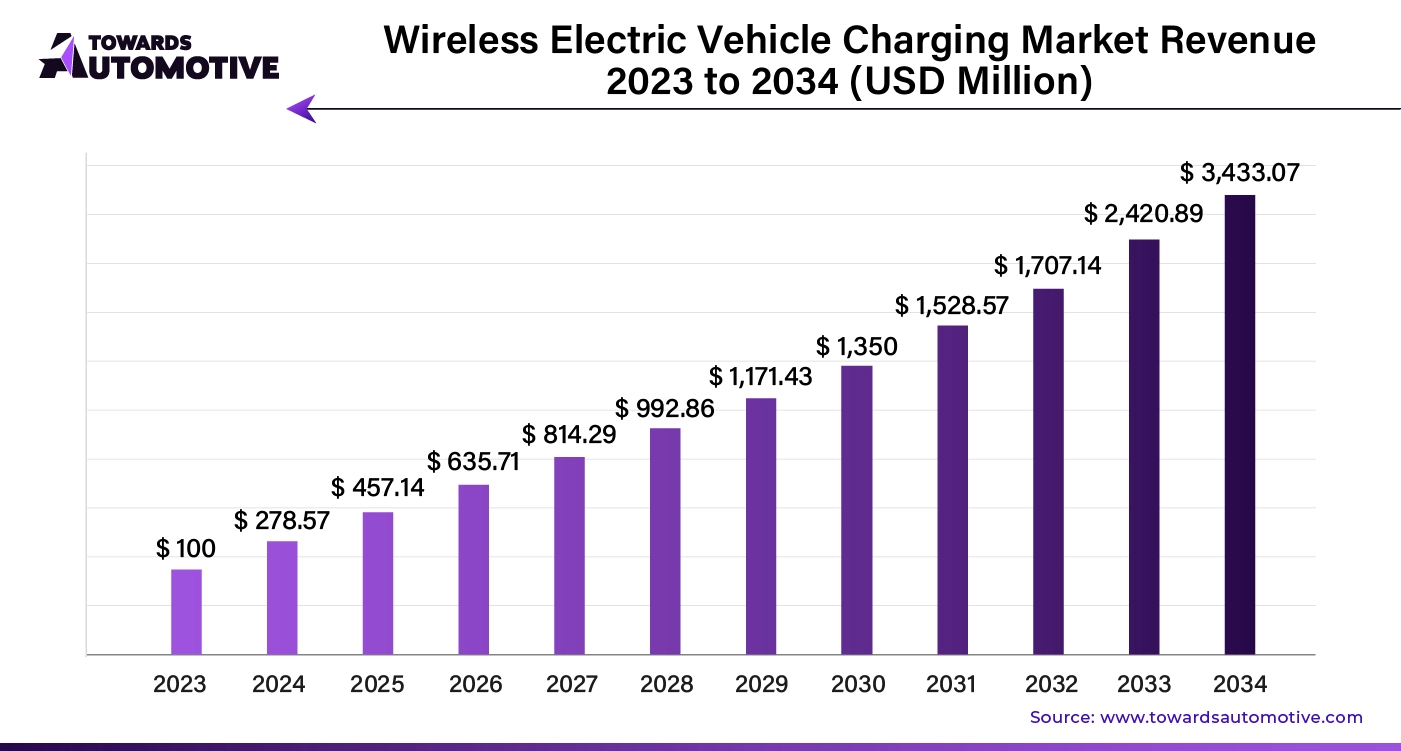
Unlock Infinite Advantages: Subscribe to Annual Membership
The Wireless Electric Vehicle Charging Market is gaining significant momentum as it offers a convenient and efficient alternative to traditional plug-in charging systems. Wireless charging, based on inductive charging technology, allows electric vehicles to charge without physical cables by using an electromagnetic field to transfer energy between a charging pad on the ground and a receiver installed in the vehicle. This technology enhances user convenience by eliminating the need for cables, making it particularly attractive for residential charging, fleet operations, and public charging stations.
One of the key drivers of this market is the growing adoption of electric vehicles worldwide, spurred by environmental concerns and government incentives promoting EV use. As the number of EVs on the road increases, the demand for more efficient and user-friendly charging solutions grows, positioning wireless charging as a key innovation in the EV infrastructure space.
Additionally, automakers and charging infrastructure companies are investing heavily in wireless charging technology, recognizing its potential to improve the EV charging experience. This includes development for both passenger vehicles and commercial applications, such as buses and autonomous vehicles. The integration of 5G technology and vehicle-to-grid (V2G) capabilities further enhances wireless charging systems, allowing for real-time monitoring, energy management, and seamless communication between the vehicle and the grid.
With advancements in battery technology and continued innovation in wireless charging efficiency, the market is poised for substantial growth. The potential for widespread adoption across residential, commercial, and public sectors is expected to drive the wireless EV charging market in the coming years.
Artificial Intelligence (AI) plays a pivotal role in the Wireless Electric Vehicle Charging Market, driving advancements in efficiency, optimization, and user experience. AI enhances the functionality of wireless charging systems by enabling smart energy management and real-time decision-making. Through AI-powered algorithms, these systems can monitor and optimize the charging process by assessing factors such as vehicle battery levels, energy demand, and grid capacity. This ensures that vehicles are charged at optimal times, reducing strain on the energy grid and lowering charging costs for consumers.
AI also enables predictive maintenance of wireless charging infrastructure. By analyzing data from charging stations, AI can predict potential failures or maintenance needs before they occur, reducing downtime and improving the reliability of charging networks. This capability is especially valuable in fleet operations, where maximizing uptime is critical for operational efficiency.
Furthermore, AI facilitates dynamic load balancing, allowing charging stations to distribute power more efficiently across multiple vehicles. This is particularly important in areas with high EV usage or during peak energy demand periods. AI systems can prioritize charging based on factors like vehicle priority, battery health, and charging speed requirements, ensuring more efficient energy use.
In addition, AI enhances the integration of autonomous vehicles with wireless charging infrastructure. As self-driving cars become more prevalent, AI will play a key role in enabling vehicles to autonomously locate and position themselves over wireless charging pads, streamlining the charging process without human intervention.
The rising sales of electric vehicles (EVs) are a major driver of growth in the Wireless Electric Vehicle Charging Market. As the global shift towards electric mobility accelerates, fueled by environmental concerns, government incentives, and stricter emission regulations, the demand for convenient and efficient charging solutions is increasing. Wireless EV charging, which eliminates the need for physical cables and plugs, is seen as a highly attractive solution, particularly as more consumers adopt EVs for both personal and commercial use.
One of the key factors driving this trend is the convenience that wireless charging offers. With a rapidly growing number of EVs on the road, consumers are looking for hassle-free ways to charge their vehicles at home, in public spaces, and at workplaces. Wireless charging allows EV owners to simply park their cars over a charging pad, without the need for manual plug-ins, making the charging process seamless and less time-consuming. This convenience is expected to be a significant selling point, particularly as the EV market expands.
Furthermore, the increase in EV fleet adoption by logistics, transportation, and ride-hailing companies further fuels the demand for wireless charging. Fleet operators benefit from wireless systems because they reduce wear and tear on charging cables and connectors, improving operational efficiency and lowering maintenance costs.
As electric vehicle sales continue to rise, the need for innovative charging solutions that enhance user convenience and support the growing EV infrastructure becomes critical. This increasing demand is expected to significantly boost the growth of the wireless electric vehicle charging market in the coming years.
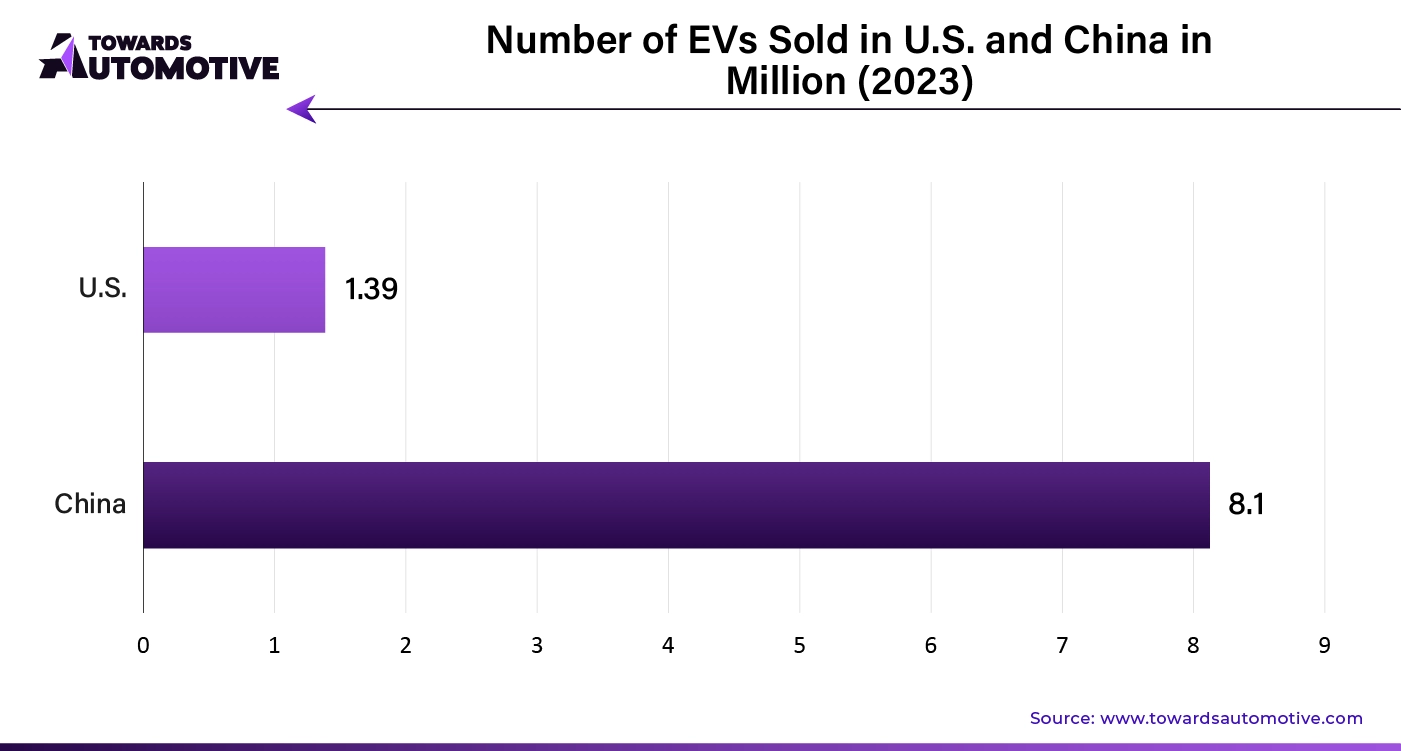
The Wireless Electric Vehicle Charging Market faces several restraints, including high installation costs and the limited availability of compatible infrastructure. The technology requires significant investment in specialized equipment, such as charging pads and vehicle receivers, which can be cost-prohibitive for both consumers and businesses. Additionally, the adoption of wireless charging is hindered by the lack of standardization across manufacturers, leading to compatibility issues between vehicles and charging stations. Concerns around energy efficiency and the slower charging speeds, compared to traditional wired methods, also limit widespread adoption in the market.
Smart grid technology plays a crucial role in creating opportunities within the Wireless Electric Vehicle Charging Market by enabling efficient, seamless integration between electric vehicles and energy infrastructure. A smart grid allows for real-time communication between EVs, wireless charging stations, and the electricity grid, optimizing energy distribution and usage. This dynamic energy management ensures that vehicles are charged when demand is low or renewable energy is abundant, reducing energy costs for consumers and minimizing strain on the grid during peak hours.
Additionally, smart grids enhance the potential for vehicle-to-grid (V2G) technology, where EVs can return energy to the grid, creating a more sustainable energy ecosystem. Wireless charging systems equipped with smart grid capabilities allow for bidirectional energy flow, enabling EV owners to not only charge their vehicles but also contribute excess power back to the grid when needed.
Furthermore, smart grids improve the scalability of wireless charging infrastructure by enabling better load balancing and predictive maintenance. This technology helps utilities and charging operators optimize network efficiency, reducing operational costs and making wireless charging more accessible to a wider market. Overall, smart grids create new opportunities for innovation, efficiency, and sustainability in the wireless EV charging market.
The stationary wireless charging systems segment held the largest share of the market. Stationary wireless charging systems are a key driver of growth in the Wireless Electric Vehicle Charging Market, offering a convenient and user-friendly alternative to traditional plug-in charging methods. These systems use inductive technology, allowing vehicles to charge simply by parking over a charging pad, eliminating the need for physical cables or connectors. This ease of use is particularly appealing to consumers seeking a hassle-free charging experience, especially in residential settings where daily charging is common.
The commercial sector also benefits from stationary wireless charging, especially in fleet management for buses, taxis, and logistics vehicles. Fleet operators appreciate the reduced wear and tear on charging equipment, which translates to lower maintenance costs and improved operational efficiency. Wireless charging also supports efficient turnaround times, as vehicles can be charged while parked or waiting between routes.
Moreover, the growing EV infrastructure is increasingly incorporating stationary wireless charging systems in public spaces like parking lots and shopping centers, offering added convenience to drivers. As electric vehicle adoption rises globally, the demand for user-friendly and low-maintenance charging solutions is expected to significantly boost the growth of the wireless EV charging market, with stationary systems playing a crucial role in this expansion.
The home charging units segment dominated the industry. Home charging units are a significant driver of growth in the Wireless Electric Vehicle Charging Market by offering convenience and ease of use for EV owners. Wireless home charging systems eliminate the need for physical plugs and cables, allowing drivers to simply park their vehicle over a charging pad in their garage or driveway. This effortless charging process enhances the user experience, making EV ownership more appealing and reducing the barriers to entry for new adopters.
The rise in electric vehicle sales is increasing the demand for home-based charging solutions, as more consumers prefer the convenience of charging their vehicles overnight. Wireless home charging units cater to this need by providing a hassle-free, efficient solution, which integrates seamlessly into the home environment. Additionally, as housing developers and architects increasingly integrate EV charging infrastructure into new homes, the demand for wireless charging systems is expected to rise.
Furthermore, wireless home charging units reduce the wear and tear associated with traditional plug-in chargers, offering a longer-lasting and low-maintenance solution for homeowners. As EV adoption continues to expand, the demand for user-friendly and convenient home charging options will further drive growth in the wireless EV charging market.
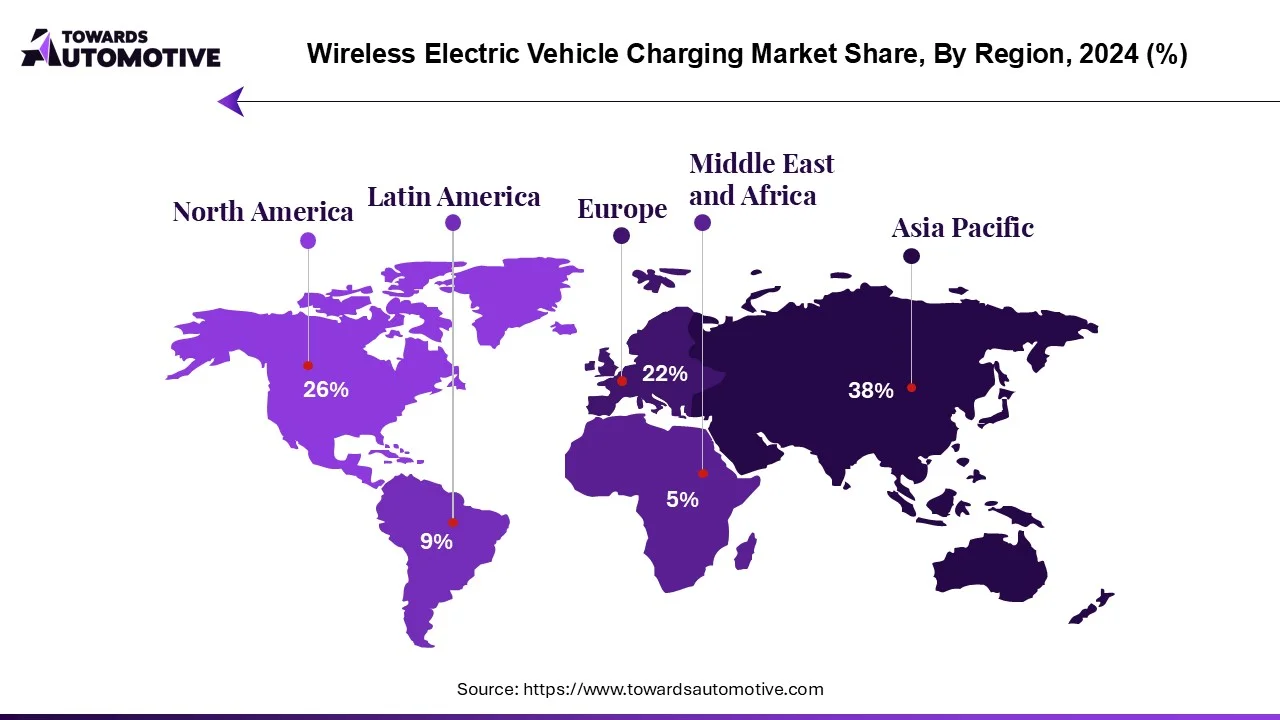
Europe dominated the wireless electric vehicle charging market. In Europe, the growth of the Wireless Electric Vehicle Charging Market is significantly influenced by several key factors. The European Union's strong environmental policies and regulations are a major driver, with stringent targets aimed at reducing carbon emissions and promoting the shift to electric mobility. These regulations incentivize the adoption of electric vehicles and, consequently, the development of advanced charging infrastructure, including wireless systems. The rising adoption of electric vehicles across Europe fuels demand for more convenient and efficient charging solutions. Wireless charging offers a user-friendly alternative to traditional plug-in methods, aligning with consumer preferences for ease and convenience. Public and private investments are also pivotal, as governments and companies invest heavily in smart city projects and EV infrastructure, integrating wireless charging solutions into urban environments, public spaces, and residential areas. Furthermore, the growing emphasis on autonomous driving technology enhances the appeal of wireless charging, as it supports the seamless integration of autonomous vehicles into smart transportation systems.
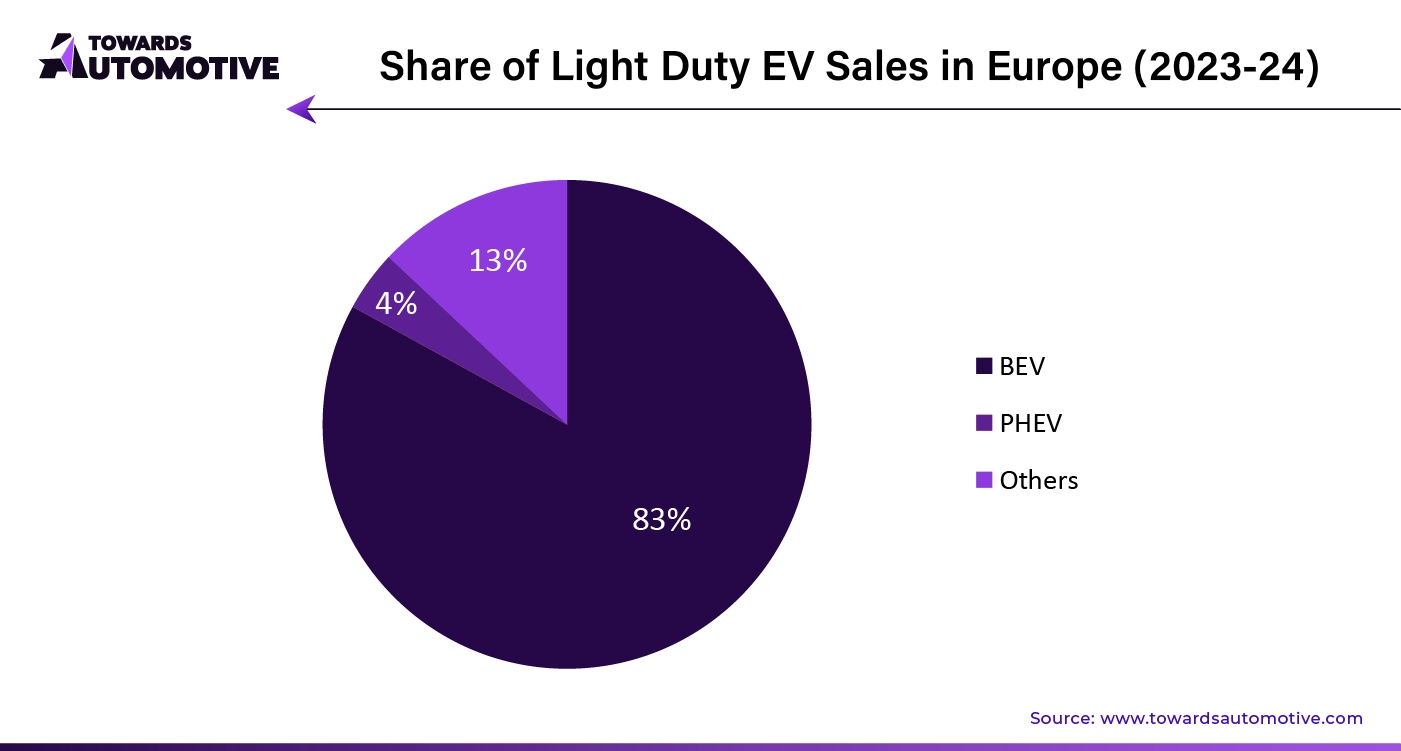
Asia Pacific is expected to grow with a significant CAGR during the forecast period. The growth of the Wireless Electric Vehicle Charging Market in Asia Pacific (APAC) is significantly driven by the expansion of smart city projects, robust investments in R&D, and a growing focus on 5G connectivity and smart grid integration. As APAC countries rapidly develop smart cities, there is a concerted effort to integrate advanced technologies into urban infrastructure, including wireless EV charging stations. These projects aim to enhance urban mobility, efficiency, and sustainability, making wireless charging a key component. Additionally, strong investments in research and development are accelerating the advancement of wireless charging technologies, improving their efficiency, reliability, and cost-effectiveness. This R&D focus is crucial for scaling up the deployment of wireless charging systems and meeting the growing demand from both consumers and fleet operators. The emphasis on 5G connectivity and smart grid integration further supports the market by enabling real-time data communication and energy management, which enhances the functionality and efficiency of wireless charging systems. Together, these factors drive the adoption of wireless EV charging solutions across APAC, facilitating the transition to cleaner, more convenient, and technologically advanced transportation systems.
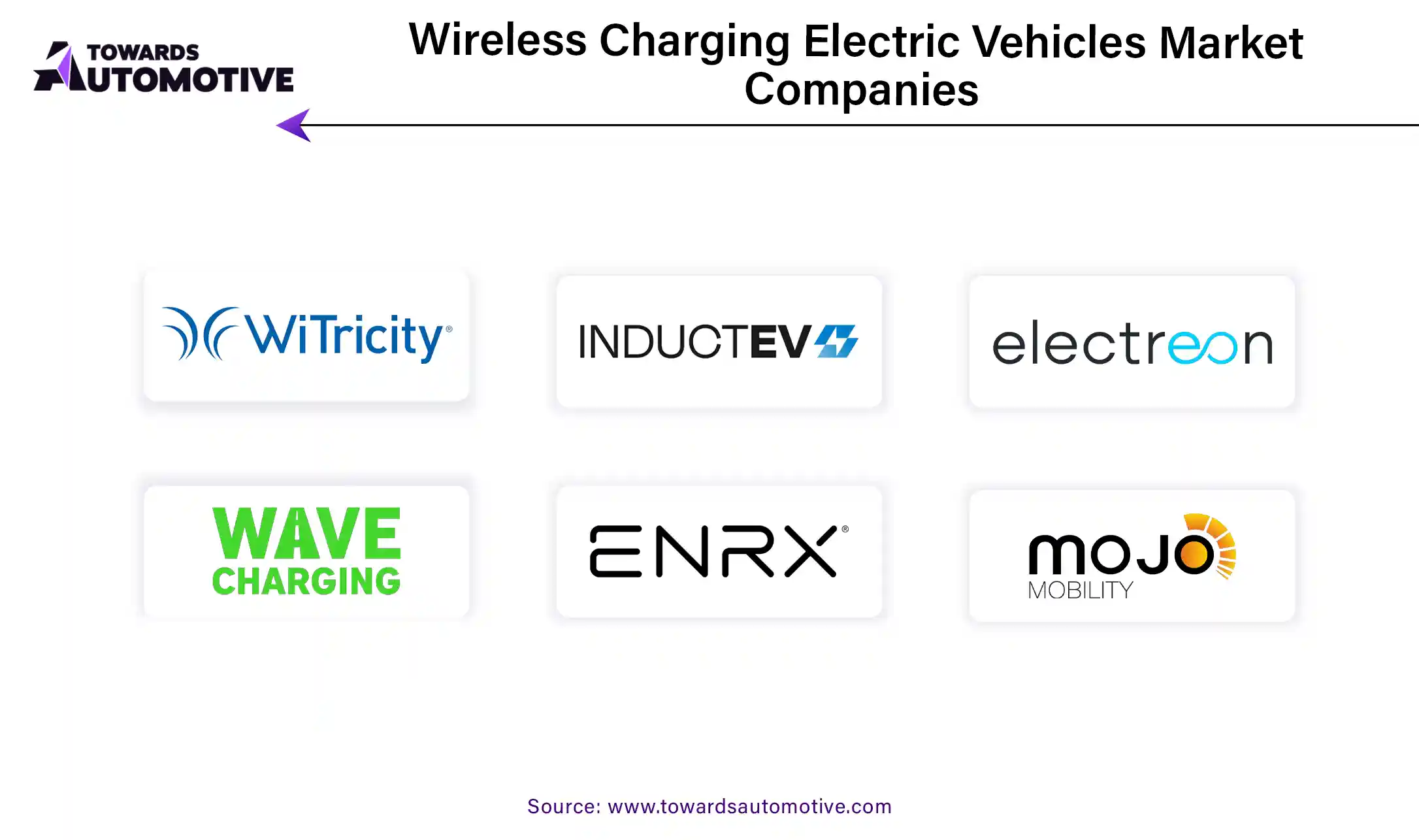
By Propulsion
By Vehicle Type
By Power Supply Range
By Charging System
By Application Type
By Component
By Charging Type
By Region
March 2025
March 2025
March 2025
March 2025
Dr. Arjun Patel is a distinguished expert in the automotive industry, holding advanced degrees in Automotive Engineering and Mechanical Engineering. His expertise spans automotive market dynamics, technological advancements, and sustainable practices. Dr. Patel excels in conducting in depth research and analysis on market trends, consumer preferences, and the economic implications within the automotive sector. He is renowned for his insightful publications on topics such as electric vehicles, autonomous driving technologies, and the evolution of sustainable transportation solutions. Dr. Patels research contributions have significantly advanced understanding in the field, earning him recognition as a leading authority in automotive research and analysis.
We offer automotive expertise for market projections and customizable research, adaptable to diverse strategic approaches.
Contact Us